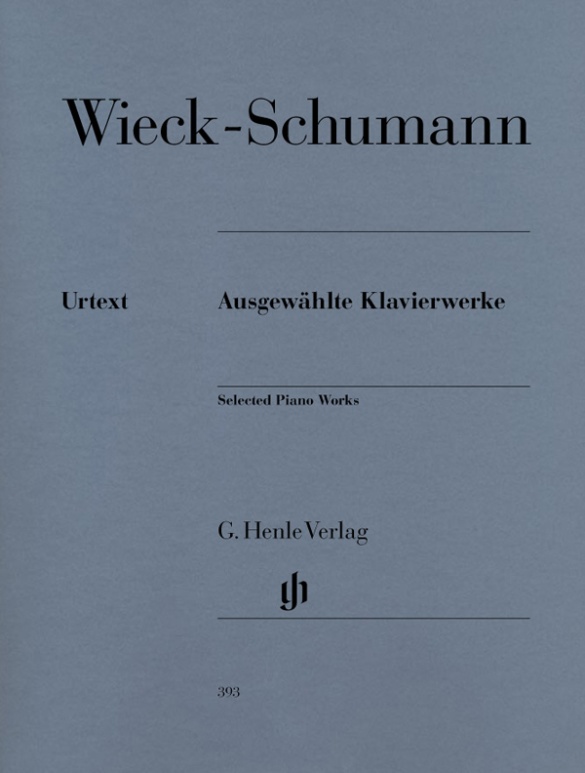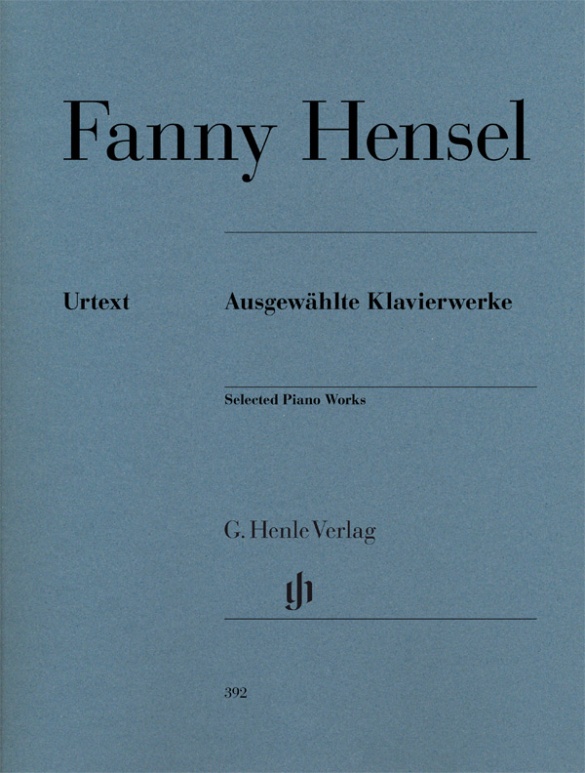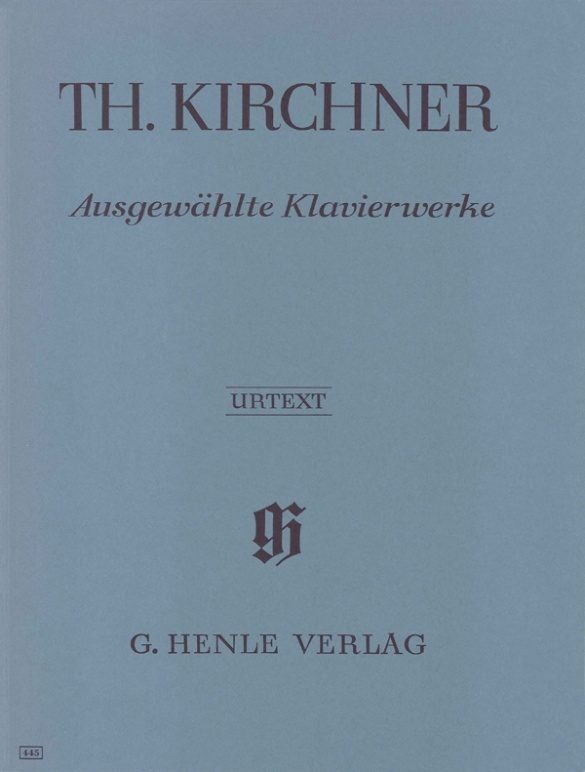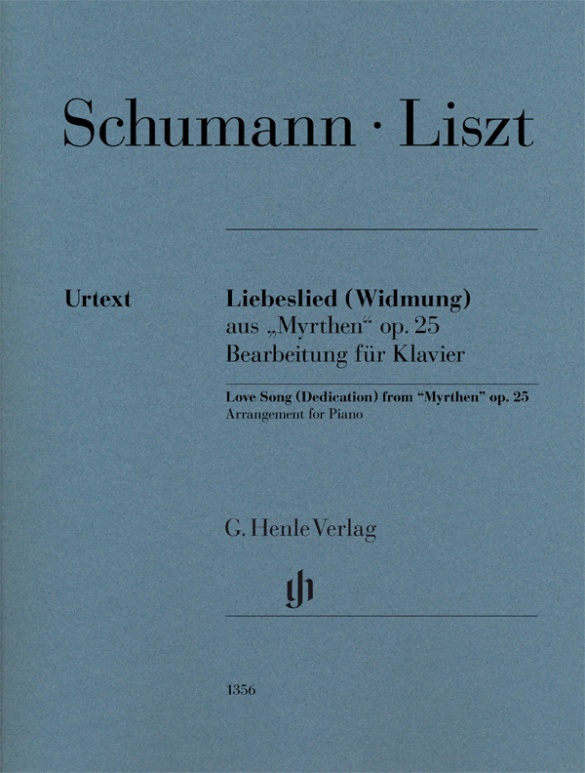Clara Wieck-Schumann
Selected Piano Works
Clara Wieck-Schumann (1819–1896), who married Robert Schumann in 1840, was a fascinating artistic figure – both as a pianist and as a composer. While her legendary virtuosity has faded away for ever, her works still live. Clara already began composing when she was a child: her opus 1 (of a total of 23 opera) was published when she was a mere 11 years old. This volume contains a selection of some of her most valuable compositions for piano, including a very worthwhile, hitherto unpublished “Romance”.
内容/詳細
作曲家について
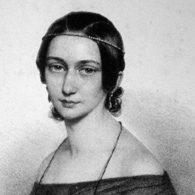
Clara Wieck-Schumann
She was an outstanding pianist and composer whose work was in no way inferior to that of her male contemporaries. Until 1840 she primarily composed virtuosic pieces for her own concert use; after that time came numerous songs, chamber music with piano, arrangements, and cadenzas for concerti by Beethoven and Mozart.
| 1819 | Born in Leipzig on September 13, the daughter of the piano pedagogue Friedrich Wieck, from whom she received piano instruction from an early age. After her parents’ divorce in 1824, she remains with her father. |
| 1828 | Concert debut in Leipzig; composition studies with Weinlig, Dorn, and Dehn. First piano soiree in 1830. |
| from 1831 | Publication of the Quatre Polonaises, Op. 1, and of other virtuosic piano pieces for her own use. |
| from 1832 | Tours with her father to Paris and other cities. Studies in theory and composition with Reissiger in Dresden. |
| 1835 | Valses romantiques, Op. 4, after the example of Carl Maria von Weber. Premiere by Mendelssohn of her Piano Concerto, Op. 7. |
| 1838 | Appointed imperial and royal chamber virtuoso in Vienna, in gratitude for which she composes “Souvenir de Vienne,” Op. 9. |
| 1840 | Marriage to Robert Schumann. |
| 1841 | Many songs, some together with Robert, are published (Op. 12). Piano Sonata in G minor (1841/42) |
| 1844 | Concert tour to Russia. |
| 1844/45 | Moves to Dresden. |
| 1846 | Piano Trio in G minor, Op. 17, uses polyphonic compositional techniques. |
| 1850 | Relocation to Düsseldorf. |
| 1853 | Final compositions. |
| 1856 | Death of Robert. Numerous tours until 1891. |
| 1878 | Piano instructor at the Hoch Conservatory in Frankfurt am Main. |
| 1881–93 | Editor of Robert Schumann’s oeuvre (with Brahms and others). |
| 1891 | Final public performance, conclusion of her teaching career. |
| 1896 | Death in Frankfurt am Main on May 20. |
校訂者や運指担当者について
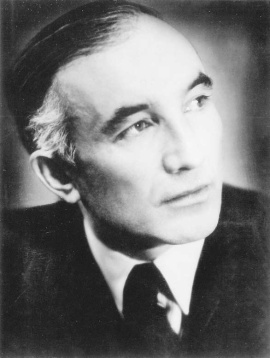
Hans-Martin Theopold (運指)
Prof. Hans-Martin Theopold, was born to a pastor’s family in Detmold on 22 April 1904, the youngest of five children. Even as a child he often played the organ in the “Marktkirche” and soon began to take piano lessons with Theodor Vehmeier. At the age of 17 he made his debut at the Landestheater in Detmold with Ludwig van Beethoven’s Piano Concerto in C major under Friedrich Quast (Herford). Following the successful completion of his schooling at the Gymnasium Leopoldinum in Detmold, he went on to study music and piano (main subject): from 1922–23 at the “Württembergische Hochschule für Musik” in Stuttgart (with Max Pauer, 1866–1945) and then from 1923–1928 at the “Staatliche Akademische Hochschule für Musik” in Berlin-Charlottenburg (with Richard Rössler, 1880–1962, and Waldemar Lütschg, 1877–1948). After completing his piano studies (graduating with “very good”) in 1928, he began an active solo career both at home and abroad (USA, Switzerland, Scandinavia, the Baltic states, the Balkans). As a member of the Chamber Music Association of the State Opera in Berlin (from 1933) he also gave countless chamber music concerts, including ones with his violin partner Gustav Havemann (1882–1960).
In the 1930s, audiences and the press alike raved about Theopold’s extraordinary gifts as a pianist: “This young player has it in him to soon become one of the best players in Germany. A superior technique, a wonderful singing piano tone, the strength of a Titan, but not at all hard due to the incomparably gentle elasticity of his touch” [Münchener Zeitung, 21 November 1933]. – “H.M. Theopold gave convincing proof of his splendid pianistic ability in an extremely gripping sonata with a modern idiom by Alban Berg, but predominantly in Schubert’s […] Wanderer Fantasy, which he played with a polished technique and creative power” [Weser-Zeitung, 21 December 1932]. Theopold was awarded several prizes, including the “Grotrian-Steinweg-Preis” in 1928.
In 1937 Theopold became a teacher for the piano (main subject) at the “Bayerisches Staatskonservatorium der Musik” in Würzburg. In 1939 he married Irene Tatjana Wülfing, who was from Moscow. From 1943 he became head of the piano master-class at the “Nordische Musikschule” in Bremen, although this was interrupted by the events of the war. Following his return from a prisoner of war camp, Theopold gave concerts and taught although he did not hold a permanent position. From 1955–1956 he was acting head of the piano master-class at the “Bergisches Landeskonservatorium” in Wuppertal, finally being appointed Professor for Piano on 1 April 1956 at the “Staatliches Institut für Schul- und Volksmusik” in Detmold, later at the “Nordwestdeutsche Musikakademie Detmold” (today “Hochschule für Musik Detmold”), where he taught for decades. On 30 September 1969 he retired. “His students extol his pedagogical gifts. […] Humour, charm, helpfulness and kind-heartedness moderate the strictness of his professional ethos as a musician and teacher” (Lippische Rundschau, 23 April 1969; see also: Lippische Landeszeitung 22 April 1969 on the occasion of Theopold’s 65. birthday: “Prof. Theopold, a modest but at the same time energetic man, is an enthusiastic teacher”). Theopold died in Detmold in 2000.
Contact with Günter Henle was established directly after the publishing house was founded, when Theopold thanked the publishers with great enthusiasm for its first Urtext editions. His extensive correspondence with the publishing house was bequeathed to the Lippische Landesbibliothek in 2014 to ensure its long-term accessibility to the public. The letters testify not only to Theopold’s great interest in musical sources and text questions but also to his initial strict refusal (!) of fingerings in text-critical editions such as these: “For fingerings are and remain something individual no matter what their quality” (letter to Günter Henle from 26 May 1949 {publishing house archives}). Günter Henle was not, however, to be swayed and stressed the necessity of fingerings in his Urtext editions: “It is better to publish the Urtext […] with fingerings that are not necessary for a few individuals, or that might even, I admit, be considered irritating here and there” (letter to Hans-Martin Theopold of 17 September 1953).
It was only in 1955 that Theopold accepted Günter Henle’s offer of contributing fingerings for an Urtext edition that was in the process of being prepared by way of trial. (HN 74, Schubert, Complete Dances for Piano, Volume 1). Following this, Theopold was commissioned to write the fingerings for nearly all of the publishing house’s new editions in quick succession. Günter Henle, himself a good pianist, greatly valued Theopold’s fingerings, and also the many suggestions regarding the musical text in question. In addition, Theopold was always very reliable, thorough and conscientious – something that is not unimportant with editorial work!
Thus to date Hans-Martin Theopold has provided the fingerings for the greatest number of Henle Urtext editions by far – 226 editions (!) in total.
We would like to thank Mrs Margot Theopold and the Hochschule für Musik in Detmold for their great support in providing biographical material.
G. Henle Verlag
製品安全に関する情報

G. Henle Verlag
製品の製造元に関する情報はこちらでご覧いただけます。G. Henle Verlag
Forstenrieder Allee 122
81476 München
info@henle.de
www.henle.com
おすすめ
autogenerated_cross_selling
このタイトルを含む他の版
このタイトルを含む他の版


